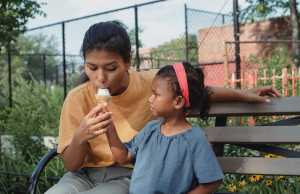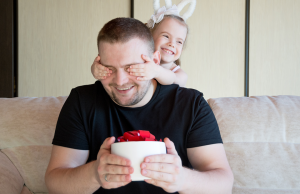- Dealing with an angry child can lead to all sorts of frustrations—however, it’s important that parents address these angry outbursts properly.
- Fortunately there’s a 3D model that works to build a child’s self-esteem, encourage their healthy expression of their feelings, and cultivate a healthy parent-child relationship.
- First, parents should cast their defensive nature aside and accept that their child is going to grow frustrated and unhappy at times.
- Then, parents should offer empathy to their child: they can do so by openly acknowledging their child is upset or angry.
- Finally, after they’ve talked through the situation at hand, parents should carry out the discipline and set boundaries so the child knows how they should (and shouldn’t) behave next time.
Jan has had it rough with her son Liam lately. It’s like he’s trying to push her buttons and get into trouble. Thankfully, however, today he appears to be on his very best behavior: he’s using his manners, listening well, and even remembering to clean up after himself. Unfortunately, this doesn’t last for long. When Jan announces playtime is over, Liam shouts at the top of his lungs and begs to play longer. Jan stands her ground and insists that it’s bath time. More yelling ensues and by the end of the night, they’ve both shed tears.
Dr. Fran Walfish understands just how frustrating and exhausting instances such as the one above can be. It is incredibly important, however, that parents approach their child’s angry outbursts in a productive manner—if they don’t, they’re likely to yield unwelcome, harmful effects. “Most children lose their connection to their parents during episodes of anger. This breakdown causes children to keep secrets and hide things from their parents, ultimately creating pathways to later issues including lying, drug and alcohol use, and more,” she explains.
In order to cultivate positive responses instead, Dr. Fran recommends you follow her 3D approach, which builds a child’s self-esteem, encourages healthy expression of his or her emotions, and inspires meaningful relationships. “When parents can acknowledge, invite, and openly validate angry feelings, their child becomes calm and feels accepted. This acceptance is what builds the child’s evolving self-esteem and is a prerequisite for all good relationships with peers, teachers, employers, spouses, and you, their parents,” she explains. So, the next time your child has an angry outburst, consider following Dr. Fran’s three-stage, 3D model:
1. Discard the Defensive.
The first element of Dr. Fran’s 3-D methodology is to discard defensive nature. “Every parent wants to be both loved and liked by their child. Parents should understand that their child will sometimes be mad at them or reject them altogether—especially when you’re asking them to stop a behavior or do something they would rather not do,” Dr. Fran explains. “This behavior is a necessary part of claiming themselves as a separate being with individual wants and wishes. Don’t undermine the boundaries you attempt to create by being defensive or giving in. Instead, take a deep breath (or two) and think before speaking.”
2. Demonstrate Empathy with Words.
The second and most complex element of this method is for a parent to communicate their empathy, once they’ve accepted their child’s feelings, as explained by Dr. Fran: “In the midst of a tantrum or other exaggerated behavior, many parents refuse to accept the episode, and ignore it by stepping away until the child is ready to behave. As a result, your child may think his/her feelings are not accepted. Instead, acknowledge to your child that you understand he or she is disappointed and upset, and narrate verbally what your child is feeling. Say with warmth and sincerity, “I see you are angry with me, and I’m the kind of mom (or dad) who really wants to hear about it. Tell me about how mad you are at me.”
She goes on to explain that parents should then, “address their child’s response with empathy. For instance, with a three-year-old, you might say, “Mommy (or Daddy) sees you are disappointed. You want more playtime and now it’s bath time. You got angry at Mommy. It’s hard to stop when you want more.” Being a container for your child’s anger will help him/her view you as a person that they can confide in. It also establishes your place as a stable figure, one who will not attack, run or collapse when the going gets rough. This is very important to convey to your child as she grows and faces larger issues.”
3. Perform Directive-Discipline with Boundaries.
The third and final element of Dr. Fran’s 3-D technique is to enact directive-discipline whilst maintaining boundaries: “Talking through a situation allows your child to feel heard,” Dr. Fran explains. “However, once they understand that you acknowledge and accept their displeasure, set the boundary and follow-through by taking action and “directing” (i.e., moving your child toward his responsibility, or your command). In this case, simply walk him into the bathroom and help him into the tub. Do not over-indulge him with gadgets and gifts to compensate for his struggles.”
















